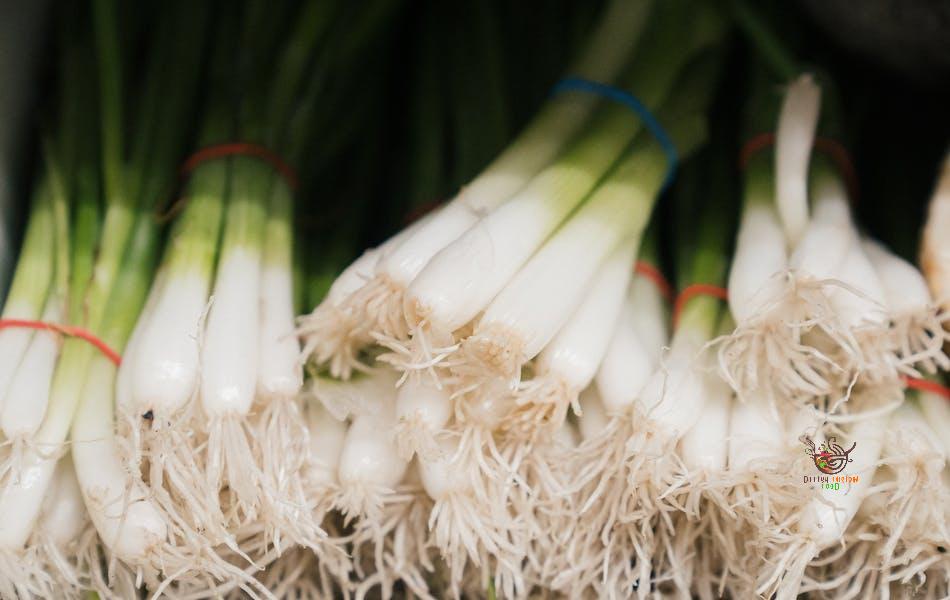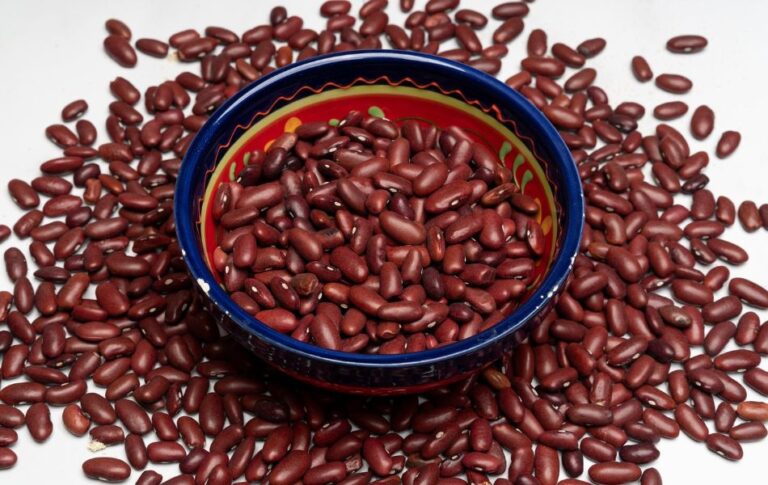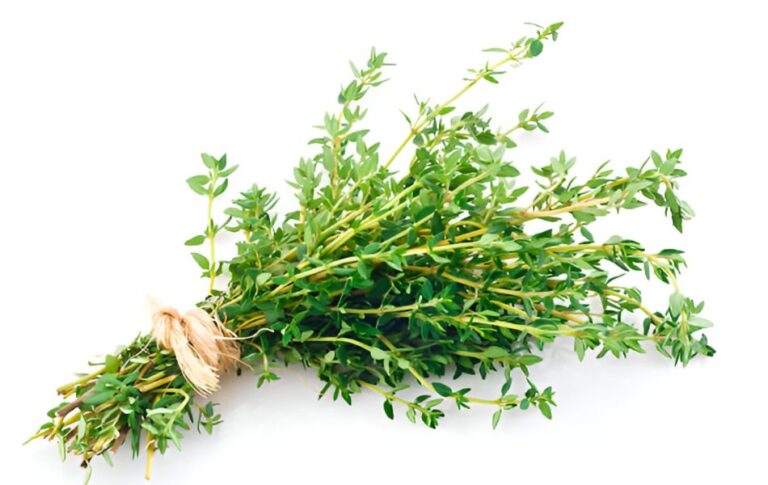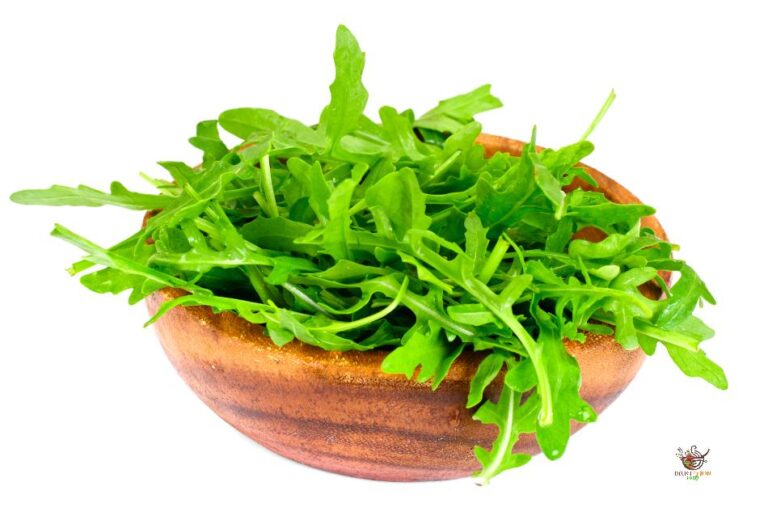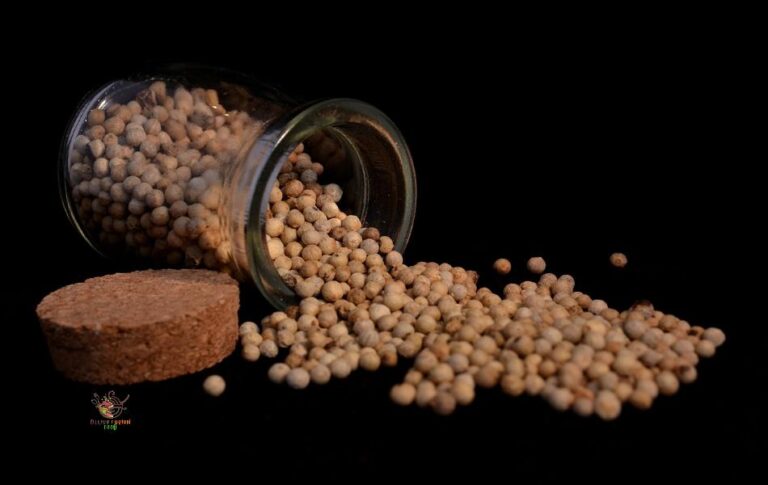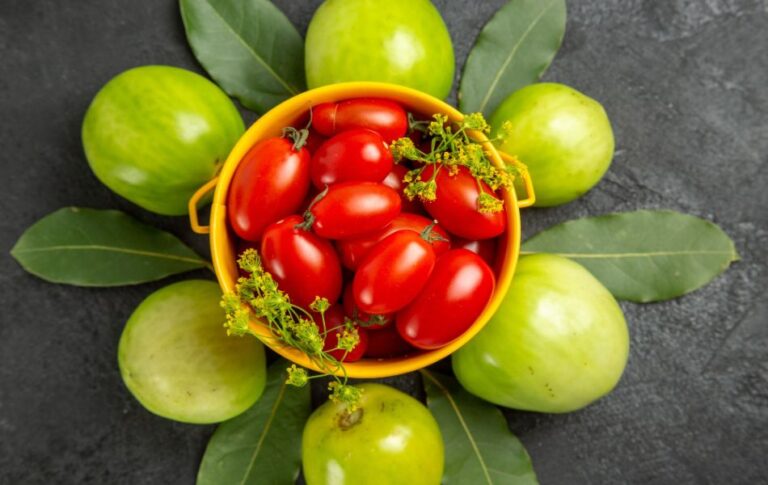8 Best Scallion Substitutes
Scallions, or green onions, are widely utilized in diverse global cuisines for their crisp, onion-esque taste. They are commonly used as a garnish or included in salads. Nevertheless, there are instances where scallions might be unavailable or not preferred. In such situations, it’s helpful to be familiar with suitable scallion substitutes that can effectively replace scallions in recipes.
What are Scallions?
Scallions grow in bunches with dark green, hollow leaves. True scallions have a straight-sided white base, distinct from rounded ones, and short off-white root threads. The two parts of scallion stalks offer different flavors: the pungent white bottom is good when cooked, while the fresh-tasting green tops make a fantastic garnish. Scallions belong to the allium family, which includes onions, garlic, shallots, leeks, and chives, sharing a similar oniony flavor. You can easily swap them with these vegetables in recipes for that signature taste. Explore how to substitute scallions with these veggies and pantry staples.
Taste of Scallions
Scallions exhibit a distinctive duality in flavor, comprising two distinct components: the white bottoms and the green shoots. The taste of the white section closely resembles that of an onion, particularly a white onion, albeit with reduced pungency and heightened sweetness. Despite being the more potent segment of the scallion, even when consumed raw as a garnish or in salads, it generally remains mild enough for most taste preferences. On the other hand, the green portion is notably onion-like, accompanied by an added touch of freshness and a grassy flavor.
Scallion Utilizations in Everyday Cooking
Scallions shine in lots of culinary roles, whether cooked, garnished, or enjoyed solo. Here are some common uses:
- Stir Fries
- Soups
- Sandwich Fillings
- Marinades and Salad Dressings
- Pasta Dishes
- Veggie Platters
- Casseroles
Best Scallion Substitutes
You have various alternatives to substitute scallions and achieve the desired onion flavor in your dish. You might already have a suitable replacement in your kitchen. Chives, shallots, and leeks, which belong to the same family as scallions, are among the top choices. Additionally, a few other alternatives also can be used to replace green onions.
1. Chive: A Scallion Substitute
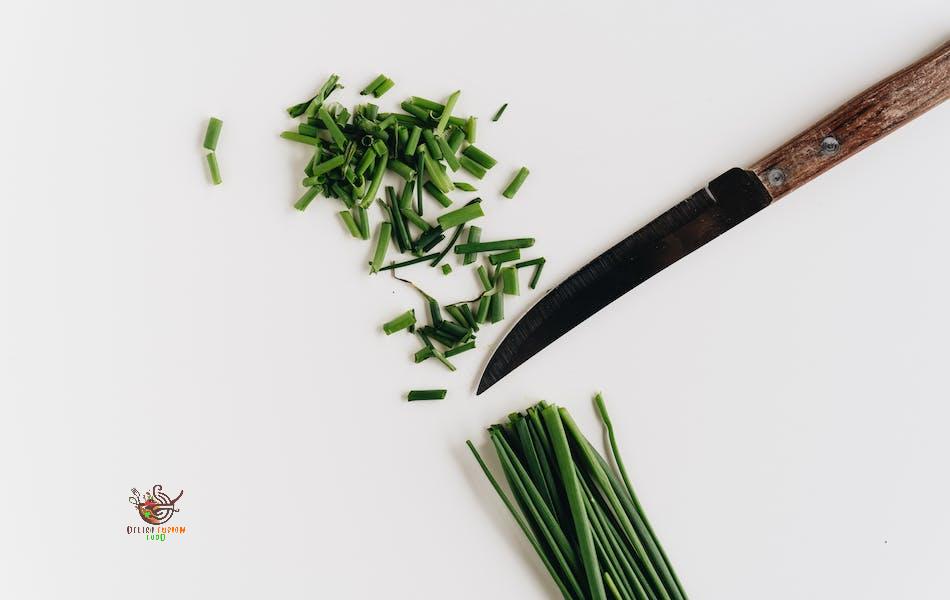
Distinguishing between chives and scallions is a common challenge, and if you’ve ever confused the two, you’re not alone. Chives and scallions vary mainly in their applications: chives are primarily utilized as a leafy herb, while scallions have diverse uses in the kitchen.
Beyond their kitchen applications, chives also function as ornamental plants in landscaping, showcasing green stalks that bloom into lilac-colored buds. Additionally, they play a role in pest control, leveraging their aromatic scent as a natural repellent.
Chives are milder than scallions with a softer texture. When used as a garnish, they look the same. We should use them in their raw state, as cooking can diminish their flavor, rendering them unsuitable as a foundational ingredient.
Sprinkle chives in fried rice, soups, eggs, salads, dips, or herb butter for color and a subtle flavor boost. Keep them fresh by wrapping them in a damp paper towel and storing them in the vegetable crisper drawer above heavier veggies in the fridge.
2. Shallots: Versatile Substitutes for Scallions
Shallots serve as the ideal replacement for scallions in stir-fries, marinades, salads, and dressings.
Despite resembling a mix of garlic and regular onions, their mild and delicate flavor makes them suitable for raw and cooked green onion alternatives. The taste is closer to green onions than red or yellow onions, making them particularly good for cooked dishes and dressings. Shallots also enhance the flavors of potato salads and egg salads.
Be cautious when swapping raw shallots for green onions; they have a more intense flavor. Use them sparingly for a balanced taste.
3. Leeks: Best Substitute for Scallions in Garnishes

Leeks are like oversized scallions with long green stalks that fan out at the end. Unlike scallions, leeks lack a bulbous base and have stringy roots at the bottom. Cleaning and cutting them requires more effort as you need to discard the darker green parts and peel away the outer layers to reveal the light green center.
Leeks are best enjoyed for their sweet and flavorful light green and white center, making them stand out in the allium family. When cooked, they bring a wonderfully sweet and less oniony taste to dishes, but they’re not ideal for raw consumption.
Leeks’ tougher, darker green part is typically unused. Due to their fibrous nature, leeks require longer cooking times.
Frying or sautéing leeks brings out their sweetness, and using them as a raw garnish doesn’t highlight their excellent flavor.
Leeks have a longer shelf life compared to scallions, spring onions, and chives, thanks to their tough outer stalks.
4. Onions
You can interchange red onions, yellow onions, white onions, or sweet onions for both raw and cooked green onions, but some varieties make better substitutes than others.
Red onions are an excellent substitute for garnishes and raw applications due to their milder flavor. However, because red onions are still stronger than green onions, chop them into small pieces and use a modest amount to avoid overwhelming your dish.
In cooked dishes, sweet onions can replace cooked green onions. When substituting onions for scallions in cooked recipes, ensure a longer cooking time to achieve a softened texture and a milder flavor.
5. Spring Onions
Spring onions are young white onions harvested before reaching full bulb size. They share a similar flavor and texture with scallions, although their bulbs may have purplish striping on the outer skins.
You can use spring onions as a substitute for scallion stalks or bulbs in equal amounts in any dish. Spring onion bulbs can be more pungent than scallion bulbs, and their stalks get tougher as they age. So, pick fresh and young spring onions when buying them.
Although the bulbs may start with more pungency, they sweeten with longer sautéing, resembling the subtlety of scallions. Use sautéed spring onion bulbs in Spanish omelets, frittatas, Asian stir-fries, or stewed sauces. The flavorful and colorful spring onion stalks work well as toppings and garnishes for nachos, dips, rice, and potato salads, similar to scallions.
6. Ramps
Ramps, a wild onion with a bold garlic-onion flavor, serve as an excellent substitute for scallions in both raw and cooked dishes, including garnishes. They grow only in spring, and while they can be hard to find, early visits to farmers markets or specialty grocery stores during the season might yield success. Every part of the ramp is edible, making it a straightforward and equal replacement for scallions.
7. Green Garlic
Green garlic, sometimes referred to as spring garlic or baby garlic, is a type of garlic harvested before the cloves reach full maturity. With a milder flavor than mature garlic, its tender greens are a suitable replacement for chives or scallions. Although green garlic has a robust garlic taste and aroma, it enhances the overall flavor of your dishes, particularly if you appreciate the garlic flavor. Commonly utilized in soups, stews, and stir-fries, it can also be a flavorful addition to salads.
8. Onion Powder
When scallions are not available, consider using onion powder as a substitute in soups, stews, sauces, dips, dressings, and marinades. While it won’t bring the fresh herby flavor or vibrant color, it is a decent alternative in a pinch.
Tips for Substituting Scallions:
- For chopped raw scallions, chives work best, especially as a garnish.
- Raw onions and shallots pack a stronger punch than scallions; avoid using them too much in raw dishes.
- Despite their visual similarity to green onions, leeks aren’t an exact substitute. Stick to using the white and light green portions.
- For an almost perfect alternative in any dish, consider spring onions or ramps as stand-ins for scallions.
FAQ
How would you describe the taste of scallions?
Scallions, part of the onion and garlic family, have a distinct onion flavor, more pronounced in their white bulbs. The green stalks offer a subtle onion taste, commonly used as a garnish.
Are scallions solely used as a garnish?
While scallion green stalks are used in garnish, their versatile bulbs excel in frying and sautéing.
How are chives different from scallions?
Chives are softer and milder, primarily used as an herb, while scallions have a stronger taste with larger bulbs.
Is there a distinction between green onions and scallions?
No, there isn’t! Green onions and scallions are identical.
How do spring onions differ from green onions?
While spring onions and green onions share similarities, they are not identical. Spring onions are essentially early stages of onions, featuring more rounded bulbs with a bolder flavor than green onions.
Which parts of a scallion are edible?
Both the white and green portions of scallions are edible.
How long do scallions last?
When stored at room temperature, scallions typically stay fresh for 2-4 days. However, refrigerating them extends their lifespan to approximately ten days.
How to best store scallions?
- Keep scallions upright with bulbs in water in the fridge.
- Wrap scallions in damp paper towels and store them in a zip-lock bag in the fridge’s crisping drawer.

